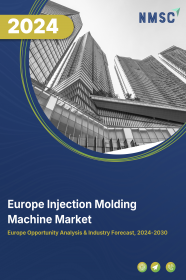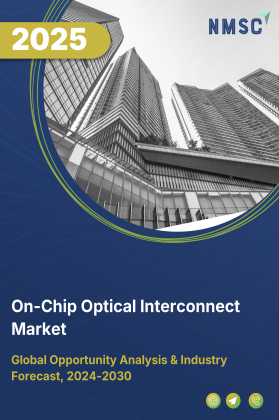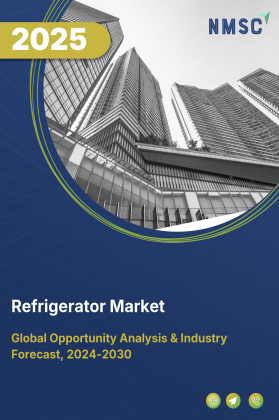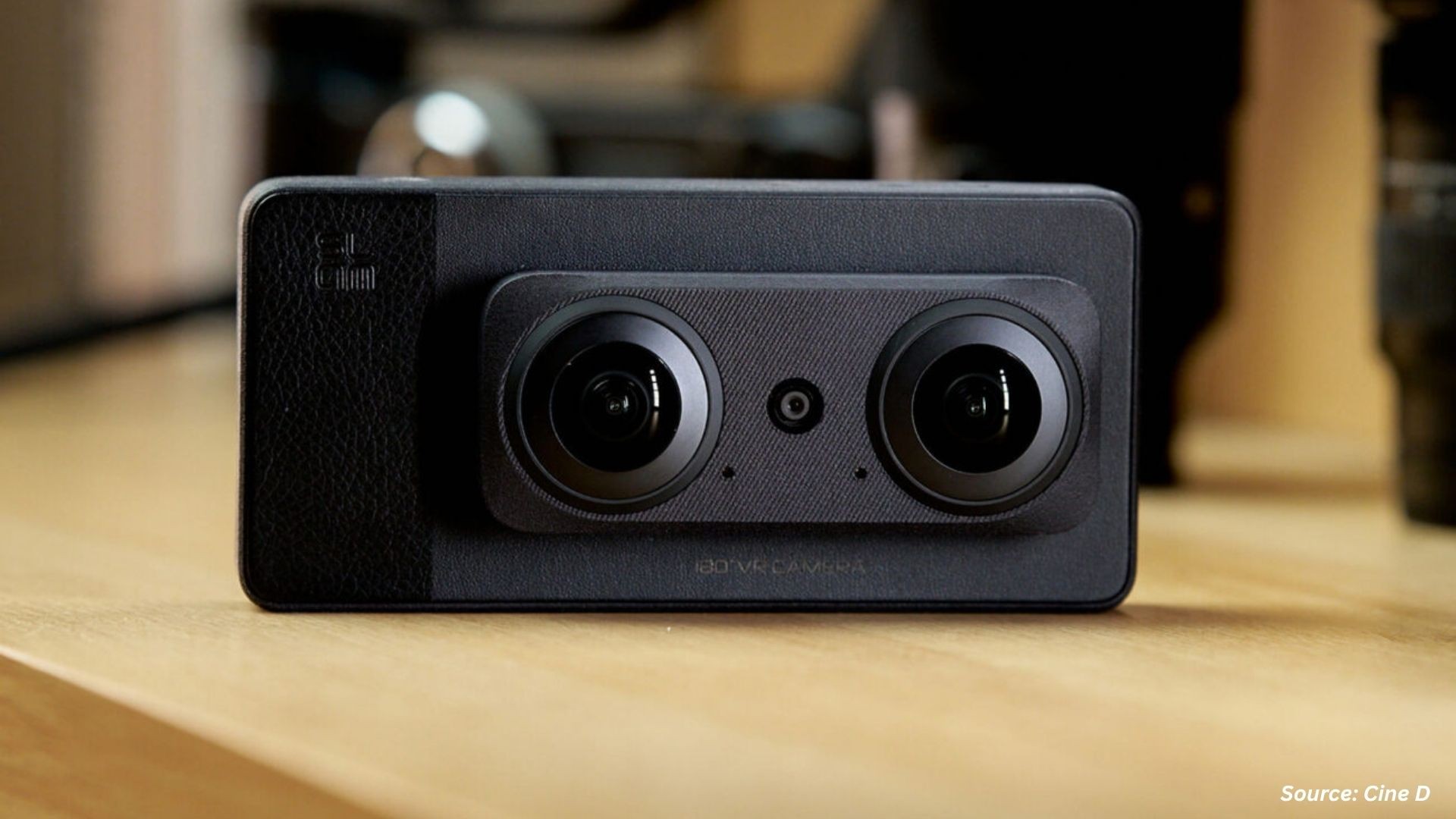
Europe Injection Molding Machine Market by Machine Type (Hydraulic, All-electric, and Hybrid),by Product Type (Plastic, Rubber, Metal, Ceramic, and Others), by Clamping Force (Below 200 Tons, 200–500 Tons, and Above 500 Tons),by End-User (Automotive, Packaging, Electronics and Electronics, Healthcare, Consumer Goods, Toy Making, Building and Construction, Home Appliances, and Others) by Business Type (New Sales and Aftersales), –Opportunity Analysis and Industry Forecast, 2024–2030.
Industry: Semiconductor & Electronics | Publish Date: 31-Oct-2025 | No of Pages: 446 | No. of Tables: 326 | No. of Figures: 251 | Format: PDF | Report Code : SE1455
Market Definition
Europe Injection Molding Machine Market size was valued at USD 5.56 billion in 2023, and is predicted to reach USD 7.07 billion by 2030, with a CAGR of 3.2% from 2024 to 2030. An injection molding machine, also referred to as an injection molder, is a sophisticated industrial apparatus designed for the precise and controlled injection of molten plastic material into a mold cavity. It melts the plastic resin and forces it into a mold under high pressure. Injection molding machines are essential tools for producing various plastic parts and products across various sectors, including automotive, consumer goods, electronics, medical devices, and others.
Surge in Demand for Lightweight, High-Precision Components
Across Europe, the need for lightweight and dimensionally accurate components is accelerating due to the growing emphasis on vehicle electrification, sustainable mobility, and compact electronic devices. Injection molding machines have become central to this transition, enabling the efficient mass production of intricate parts that meet strict tolerances and structural demands. The automotive, aerospace, and medical sectors are increasingly utilizing high-performance polymers and fiber-reinforced materials, which are ideally processed using modern injection molding technologies. These machines ensure consistency, reduced material usage, and enhanced part functionality—positioning them as critical assets for manufacturers seeking precision without compromising performance.
Alignment With Circular Economy and Eco-efficient Production
The European manufacturing landscape is rapidly evolving under the influence of environmental regulations such as the European Green Deal, Waste Framework Directive, and the push for a circular economy. Injection molding machines support these directives through precise material dosing, compatibility with recycled and bio-based polymers, and low scrap generation. Newer machine variants, especially all-electric and hybrid models, significantly reduce energy consumption during operations. As sustainability becomes a competitive differentiator, manufacturers across Europe are adopting injection molding machines that align with energy efficiency, closed-loop production, and low-emission manufacturing practices.
Deficit Of Skilled Workforce for Advanced Machine Operations
One of the prominent challenges in the European injection molding machine market is the growing gap in skilled labor capable of handling next-generation machinery. With the integration of Industry 4.0 features—such as real-time monitoring, digital interfaces, and automated process controls—the complexity of operating these machines has increased. However, training infrastructure and technical education programs have not kept pace with technological advancements, especially for small and medium-sized enterprises. This skills shortfall not only impacts operational efficiency and product quality but also slows down the widespread adoption of advanced molding technologies across various European manufacturing clusters.
Expansion of Agile and Customized Manufacturing In Europe
European industries are witnessing a shift toward small-batch, design-specific production—driven by rising consumer demand for personalized products, fast product cycles, and niche applications. This trend is particularly visible in sectors such as medical technology, cosmetics, and high-end packaging. Injection molding machines with fast mold-switching capabilities, intelligent software integration, and flexible automation are becoming essential tools for manufacturers aiming to keep up with evolving product designs and just-in-time production models. The move toward smart, adaptable, and scalable molding solutions is creating fertile ground for innovation and investment in injection molding technologies across the region
The Germany Holds the Dominant Market Share in the Europe Market
Germany's emphasis on research and development further fuels the growth of this market. Collaborations between academic institutions, research centers, and manufacturing companies conducts innovation in injection molding technology. This results in continuous improvements in machinery design, process efficiency, and material utilization, positioning Germany at the forefront of injection molding advancements. For instance, in February 2022, RJG Germany introduced a new training lab for injection molding. The facility consists of a classroom that seats up to 20 students and a fully equipped lab for hands-on experience. RJG offers injection molding training around the world by experts in the field who have first-hand experience with working on the plant floor. The training is designed to enable graduates to deliver substantial time and cost savings to their employers, whether through developing new products or managing existing projects.
Norway is Expected to Show Steady Growth in the Europe Injection Molding Machine Market
The injection molding machines market in Norway is experiencing growth driven by the expanding manufacturing industries in the country. Norwegian manufacturing output recorded a notable increase of 3.3 percent from December 2021 to January 2022, as indicated by statistics such as the production index for the oil and gas industry, mining, and power supply. This surge in manufacturing activity underscores the heightened demand for injection molding machines, which are instrumental in producing a wide range of plastic and metal components crucial to various industries. With Norwegian manufacturing industries on an upward trajectory, the injection molding machines market is poised for sustained growth and development in Norway.
Competitive Landscape
The Europe injection moulding machine industry includes several market players such as ENGEL Austria GmbH, Arburg GmbH & CKG, KraussMaffei Group, Sumitom(SHI) Demag Plastics Machinery, Wittmann Battenfeld GmbH, Milacron LLC, Husky Injection Molding Systems Ltd., Nissei Plastic Industrial Co., Ltd., FANUC Europe Corporation, S.A., The Japan Steel Works, Ltd., Haitian International Holdings Limited, Chen Hsong Holdings Limited, Dr. Boy GmbH & Co. KG, Netstal Maschinen AG, SandrettGroup, Shibaura Machine Co., Ltd., UBE Machinery Corp., Ltd., ToyMachinery & Metal Co., Ltd., Sodick Co., Ltd., Matsuda SeisakushCo., Ltd., and Others.
Europe Injection Moulding Machine Market Key Segment
By Machine Type
-
Hydraulic
-
All Electric
-
Hybrid+
By Product Type
-
Plastic
-
Rubber
-
Metal
-
Ceramic
- Other Product Types
By Clamping Force
-
Below 200 Tons
-
200-500 Tons
-
Above 500 Tons
By End User
-
Automotive
-
Interior
-
Trim
-
Exterior
-
Other
-
-
Packaging
-
Caps and Closures
-
Thinwall Containers
-
Lids
-
Personal Care
-
Containers
-
Pet Preforms
-
Other Packaging
-
-
Electrical and Electronics
-
Healthcare
-
Consumer Goods
-
Toy Making
-
Building and Construction
-
Flooring
-
Windows
-
Doors
-
Others
-
-
Home Appliances
-
Others
By Business Type
-
New Sales
-
After Sales
By Country
-
The U.K.
-
Germany
-
France
-
Spain
-
Italy
-
Netherlands
-
Denmark
-
Finland
-
Norway
-
Sweden
-
Russia
-
Rest of Europe
Key Players
-
ENGEL Austria GmbH
-
Arburg GmbH & CKG
-
KraussMaffei Group
-
Sumitom(SHI) Demag Plastics Machinery
-
Wittmann Battenfeld GmbH
-
Milacron LLC
-
Husky Injection Molding Systems Ltd.
-
Nissei Plastic Industrial Co., Ltd.
-
FANUC Europe Corporation, S.A.
-
The Japan Steel Works, Ltd.
-
Haitian International Holdings Limited
-
Chen Hsong Holdings Limited
-
Dr. Boy GmbH & Co. KG
-
Netstal Maschinen AG
-
SandrettGroup
-
Shibaura Machine Co., Ltd.
-
UBE Machinery Corp., Ltd.
-
ToyMachinery & Metal Co., Ltd.
-
Sodick Co., Ltd.
-
Matsuda SeisakushCo., Ltd.
Report Scope and Segmentation
|
Parameters |
Details |
|
Market Size in 2023 |
USD 5.56 billion |
|
Revenue Forecast in 2030 |
USD 7.07 billion |
|
Growth Rate |
CAGR of 3.2% from 2024 to 2030 |
|
Analysis Period |
2023–2030 |
|
Base Year Considered |
2023 |
|
Forecast Period |
2024–2030 |
|
Market Size Estimation |
Million (USD) |
|
Growth Factors |
Surge in Demand for Lightweight, High-Precision Components. Alignment With Circular Economy And Eco-efficient Production. |
|
Countries Covered |
11 |
|
Companies Profiled |
20 |
|
Market Share |
Available for 10 companies |
|
Customization Scope |
Free customization (equivalent up to 80 working hours of analysts) after purchase. Addition or alteration to country, regional, and segment scope. |
|
Pricing and Purchase Options |
Avail customized purchase options to meet your exact research needs. |

















 Speak to Our Analyst
Speak to Our Analyst

























